Chiesa di San Carlino alle Quattro Fontane
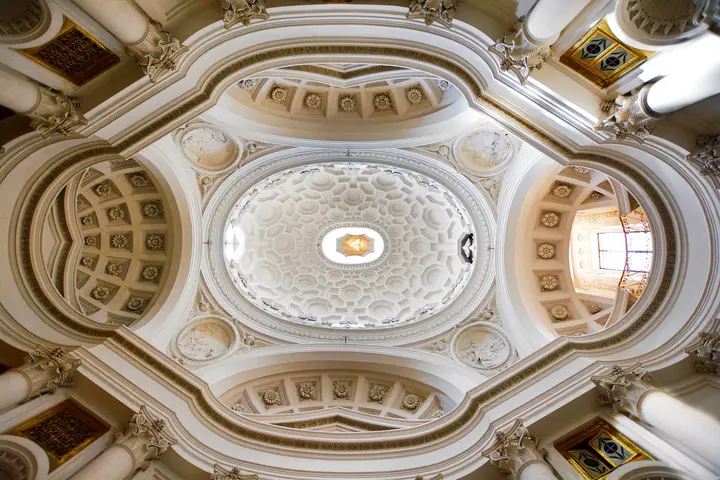
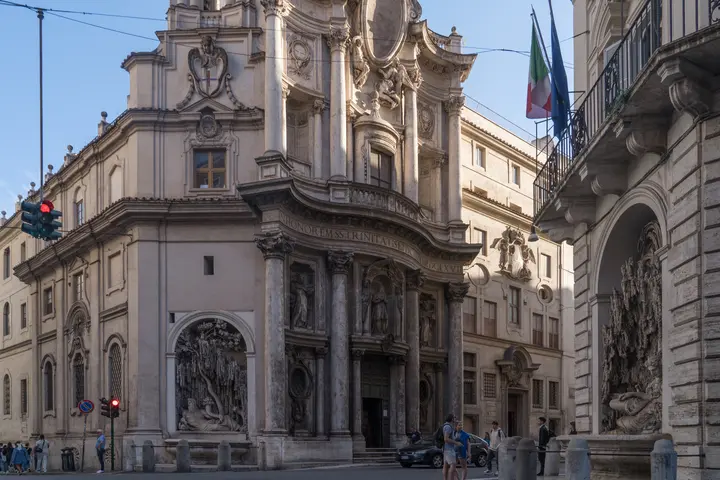
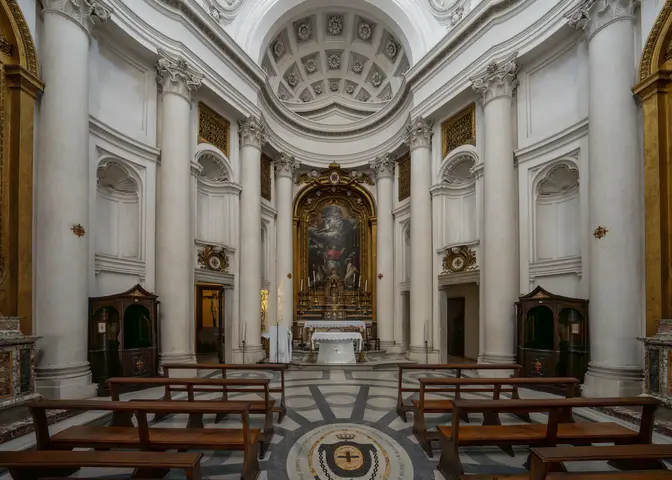
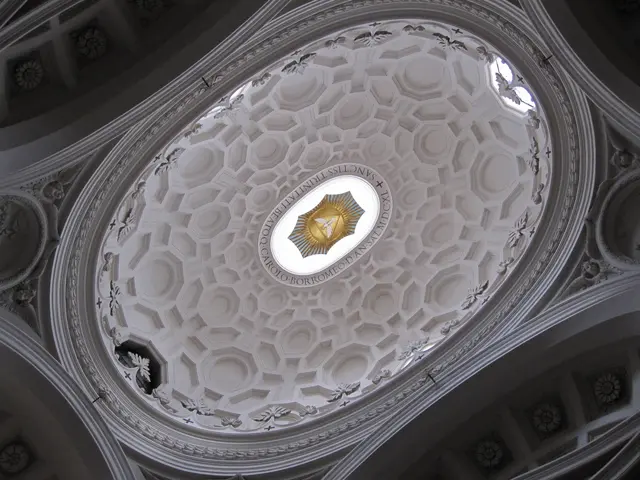
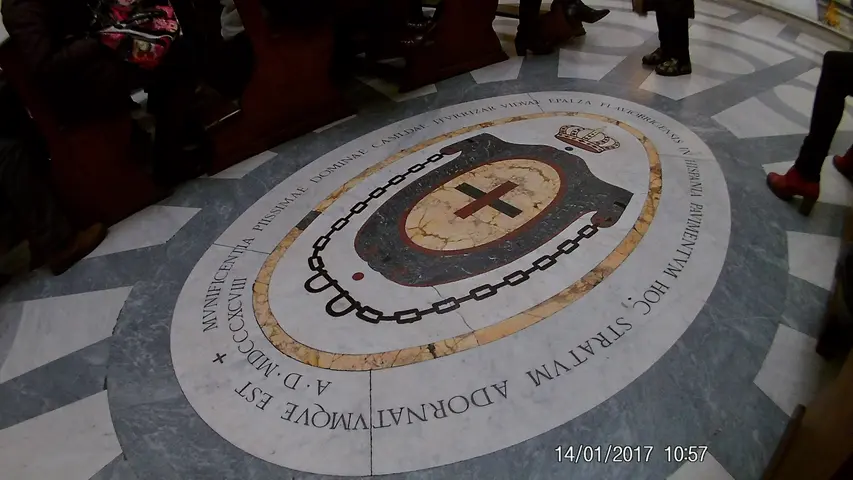
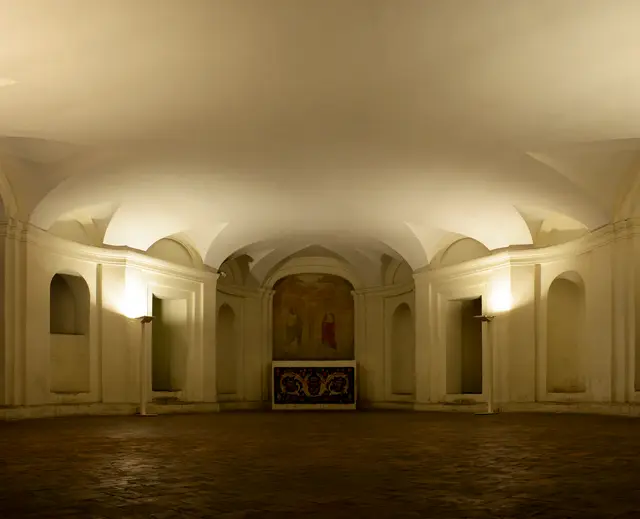
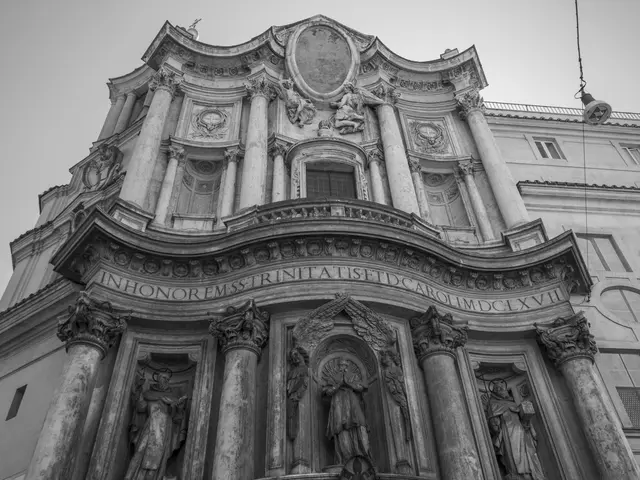
Introduction
The Chiesa di San Carlo alle Quattro Fontane, known as San Carlino for its compact size, is a gem on Rome’s Quirinal Hill. This unique Baroque church, with its curving forms and elegant dome, has fascinated locals and travelers for centuries. San Carlino is not just an architectural marvel but also a beloved neighborhood landmark—a place where history, artistry, and lively Roman spirit meet in every curve and corner.
Historic Highlights
🏰 Baroque Beginnings
The Chiesa di San Carlo alle Quattro Fontane, affectionately called San Carlino, was commissioned in 1634 by Cardinal Francesco Barberini. Borromini, eager to make his mark in Rome, became its architect. He broke new ground by reshaping the usual church layout. The result: flowing concave and convex curves embrace visitors, crafting a Roman monument that feels alive. Construction began in 1638 and the church was dedicated by 1646, amidst Counter-Reformation fervor.
“St. Peter’s is beautiful for its grandeur, and San Carlino for its smallness.”
— Roman saying
🎨 Radical Design, Modest Means
San Carlino’s architectural magic lies in its inventive geometry and humble materials. Limited funds led Borromini to use mostly brick and stucco, yet his genius shines through every detail. The facade’s “serpentine” lines ripple like gentle waves, while the oval interior dazzles with a dome that seems to soar above—an effect enhanced by shrinking stucco coffers near the oculus. Four grand columns draw the eye toward the altar, blurring the lines between structure and sculpture. Even today, many say stepping inside feels like entering a living sculpture.
“Borromini secured a reputation throughout Europe with his striking design for a small church, San Carlo alle Quattro Fontane in Rome.”
— Christian Otto, Encyclopædia Britannica
🕰️ Anecdotes and Neighborhood Pride
Romans cherish the story that San Carlino’s footprint is so tiny, it’s said to fit inside one of St. Peter’s columns. Borromini’s willingness to work for free, just to earn the commission, remains a celebrated folk tale. The nearby fountains—each built by local nobles in exchange for precious water rights—tie the church to neighborly barter and city lore. Wanderers notice that, as they circulate around the undulating walls, the space almost seems to breathe and shift in the light.
🔔 San Carlino Today
Despite challenges—pollution, urban traffic, funding woes—San Carlino stands firm. A comprehensive restoration, guided by careful research and international support, was finished in 2009. The church remains active for worship and community, its Baroque spirit resonating at the Quattro Fontane intersection. Whether you’re tracing Borromini’s bold geometry or pausing by the splash of one of the four fountains, San Carlino’s story continues to inspire.
💡 Visitor Tip
Pair your visit to San Carlino with a stroll to Sant’Andrea al Quirinale nearby—compare their curving interiors and see Baroque rivalries come to life.
Timeline & Context
Historical Timeline
- 1634 – Francesco Barberini commissions Chiesa di San Carlo alle Quattro Fontane for the Discalced Trinitarians.
- 1638 – Groundbreaking; Borromini initiates monastic buildings and church construction.
- 1644 – Completion of main church structure and monastic components.
- 1646 – Church is solemnly dedicated to St. Charles Borromeo.
- 1667 – Borromini dies; lower facade completed.
- 1680 – Facade and bell tower finalized by Bernardo Borromini and craftsmen.
- 19th–20th c. – Minor alterations and modern urban encroachments (notably in 1936), but basic form endures.
- 1986–2009 – Major restoration spearheaded by Italian heritage authorities, completed in 2009.
Architectural Innovations of San Carlino
San Carlino redefined Baroque church architecture. Borromini’s design rejected standard classical proportionalism, relying instead on intricate geometry to maximize a tiny, irregular site. The interplay of convex and concave curves, combined with an elliptical dome and star-like plan, created an interior that is both spatially complex and emotionally arresting. Modest materials—cheap brick clad in stucco—intensified the impression of sculpted light and movement. This radical approach earned Borromini continental fame and firmly positioned San Carlino as a beacon of Baroque ingenuity.
Context within the Counter-Reformation
The church’s creation is rooted in the Counter-Reformation, the Catholic revival movement seeking to invigorate faith through art and spatial drama. Francesco Barberini’s patronage, tied to papal power, and the Trinitarians’ international connections (especially with Spain), shaped San Carlino’s role as a center for religious renewal and transnational Catholic community. The architectural drama was meant to visually embody renewed Catholic zeal while embracing humility: the church’s size and restraint echoed the monastic ideals of its order.
Socio-Cultural Role and Local Identity
San Carlino became a neighborhood emblem almost by accident—its smallness inspired affection, wit, and civic pride. The catchy Roman saying that its area would fit in a St. Peter’s column captures a popular embrace of modesty over grandeur. The church’s ties to the surrounding fountains—part of Pope Sixtus V’s vision for transforming Rome’s streets—tied it to local infrastructure and everyday Roman life. Oral traditions about Borromini’s struggles and the clever water-rights deals for the fountains are part of the church’s living heritage.
Preservation, Threats, and Ongoing Legacy
San Carlino, now a protected UNESCO World Heritage landmark, remains in stable condition thanks to extensive 21st-century restoration and vigilant care. Challenges persist: pollution darkens the stone, vibrations from increased traffic threaten stability, and funding for continued maintenance is never certain. Still, the church survives as an active place of worship and cultural memory, balancing tradition with the pressures of urban life in a modern city.
Comparative Insights
Borromini’s masterpiece stands alongside Sant’Andrea al Quirinale (Bernini) and Sant’Ivo alla Sapienza (Borromini), both in the same era and neighborhood. Each church worked with limited space yet delivered maximum emotional and spatial impact. Where Bernini chased grandeur through gilding and theatrics, Borromini charmed with pure form and geometry. These experimental sanctuaries mark a pivotal chapter in architectural history, and San Carlino—by blending sculptural walls, flowing lines, and humble proportions—truly shifted Rome’s Baroque narrative.
Sources and Scholarly Foundations
This synthesis relies on archival studies, scholarly journals, conservation records, and verified local anecdotes. Key sources include the Italian Ministry of Culture, UNESCO documentation, academic histories such as Christian Otto’s entries, and the official records of the Trinitarian Order. Rigorous cross-referencing ensured factual reliability, though gaps in primary sources remain. What emerges is a church whose story intertwines artistic vision, faith, and community through centuries of change.